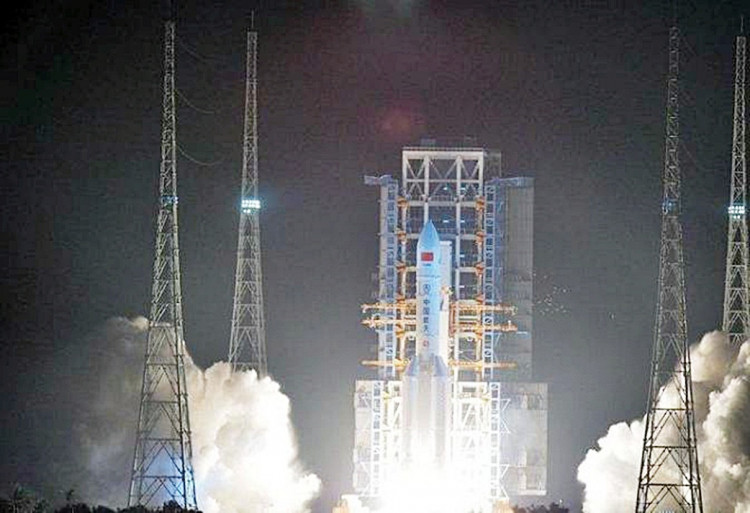On Saturday, China launched the Yaogan 33 02 satellite from the Jiuquan Satellite Launch Center in Northwest China at 7:44 am Beijing Time atop a Long March-4C carrier rocket. The secretive spy satellite will "monitor land, crop yield, and natural disasters" but analysts believe it may also collect military intelligence.
Yaogan 33 is a brand-new, classified series of remote sensing satellites. According to state-run Chinese media, the spacecraft would be used for "science experiments, census of national land resources, crop yield estimation and disaster prevention."
The U.S. Space Force detected two new objects in orbit linked with the Jiuquan launch: a new satellite in a 428 by 423 mile (688 by 680 kilometers) near-polar orbit and the upper stage of the Long March 4C in a lower perigee, or closer proximity to Earth, of 306 miles (492 km).
However, Western space analysts believe that the Yaogan series satellites serve both civil and military users in China. China launched new batches of Yaogan 35 satellites this month, which could be utilized for Earth observation or signal intelligence gathering.
The new satellite is referred to the Chinese media as a new remote sensing bird, as is customary, and it will mostly be utilized for scientific experiment research, surveys of marine and land resources, and other functions. However, it is believed that this class of satellites is employed for military objectives, as was the case with the latest launches of the Yaogan Weixing series.
The first Chinese satellite was launched from the Jiuquan Satellite Launch Center, also known as the Shuang Cheng Tze launch center, in Ejin-Banner, a county in the Alashan League of the Inner Mongolia Autonomous Region.
A Technical Centre, two Launch Complexes, a Mission Command and Control Centre, a Launch Control Centre, propellant fueling systems, tracking and communication systems, gas supply systems, weather forecast systems, and logistic support systems are all part of the complex.
Jiuquan was originally used to launch research and recoverable satellites into high-inclination medium or low-Earth orbits. This is where all Chinese crewed missions are launched.
According to Nasaspaceflight, the last satellite in the 33 series, Yaogan 33 (01), which launched in late 2020, was most likely a space-based synthetic aperture radar (SAR) system capable of imaging through clouds and at night. The orbits of the Yaogan 33 (01) and (02) are now identical.
Aiming to launch more than 50 times this year, China's primary space contractor, CASC, has already executed 35 launches in 2022. As of Sept. 5, the U.S. had launched 50 times.



